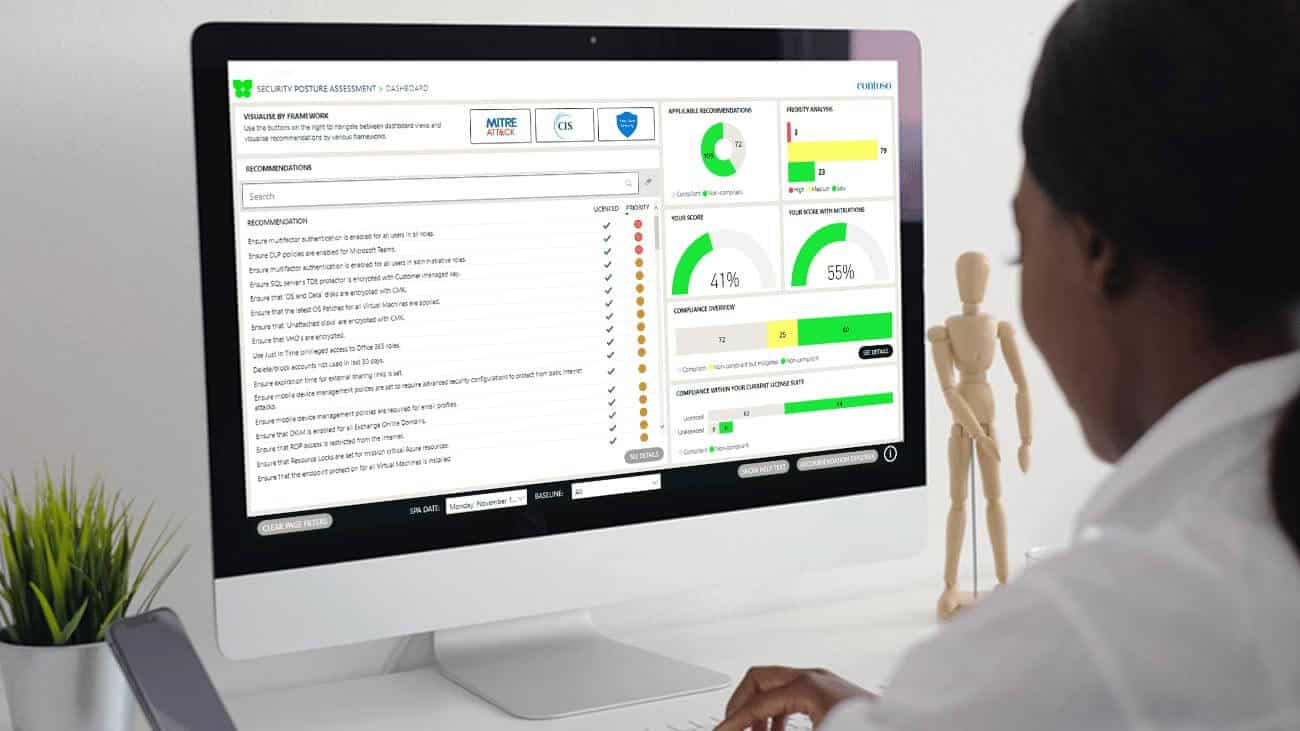Despite the significant money put towards solving IT cyber security, 78% of cyber security leaders lack confidence in their organisation’s security posture.
While those ‘at the coal face’ may have concerns, those who hold the purse strings often don’t share the view.
There certainly seems to be a mismatch between leadership and those at the forefront regarding cyber security confidence.
Which opens up questions regarding the efficiency of cyber security spending and how that money is used to solve problems.
The current landscape: What are the problems?
Businesses were already trending towards more flexible work environments for the last decade; however, the coronavirus pandemic forced this trend into overdrive. Once companies and employees tasted hybrid-work environments, it was clear there was no going back.
This forced nature and rapid adoption have left organisations scrambling to mature cybersecurity in the face of this new dynamic.
While many challenges exist, a lack of visibility and control is perhaps the most poignant. Here are some of the adverse effects it’s having on businesses today:
- Losing 2 hours of productive time per employee per week due to interruptions
- 55% of helpdesk tickets are related to endpoints, costing time and money
- 10,000-person companies lose on average $25 million as a result of mobile technology interruptions
- The average corporate data breach cost organisations $4.35 million
In short, low visibility leads to an inability to provide safe, reliable, and resilient work experiences.

Watch 3-minute Security Posture Assessment Demo
See for yourself how a Security Posture Assessment helps you:
- Improve visibility of security threats
- Prioritise threats based on risk and effort
- Track improvements and measure ROI
- Stop wasting money with smarter investments
But where does this lack of visibility come from?
The dissolution of the traditional on-premise security boundary has led to many complications for IT cyber security.
Headquarters don’t necessarily know:
- Where user endpoints are located
- What devices they are using
- What networks they are using
- What other devices are connected to said network
- What data they are accessing
- What cloud services they are using
Plus a raft of other unknowns.
All of which contribute to endpoints becoming becoming the primary weak spot in an organisation’s security, with threat able actors exploit it as a soft spot for infiltrations and establishing persistence.
What’s behind this weak endpoint security?
Unsurprisingly, 68% of organisations had fallen victim to a successful endpoint attack in the last year. The most telling factors that are behind the risk involved with using endpoints in hybrid work environments are:
- Devices with unhealthy security controls (25%)
- Compromised devices being used to access company data (51%)
- Rapid growth in remote networks, with 76% of organisations expecting to increase the amount of remote access over the next two years
How to adapt your cyber security for work from anywhere environments
The typical model for an individual user looks like this: You’ve got the user with their endpoint device, accessing your organisation’s network remotely. They use local apps over a Wi-Fi connection to browse the internet and access the relevant SaaS and enterprise apps.
This is a long chain with many potential points of failure. A compromised device, Wi-Fi network, local or cloud-based apps, and unsafe user practices can all lead to a successful breach.
The obvious answer seems to be to deploy a zero-trust system. In theory, this should give organisations the ability to enforce always-on visibility and control by:
- Ensuring resilient endpoints are using authorised, secure, and uncompromised apps
- Establishing secure connections through the use of a VPN
- Deploying a DEM (digital experience monitoring) solution to monitor the network for user experience issues or cybersecurity incidents
The only problem is that zero-trust models can sometimes lead to inconsistent and negative user experiences. Another challenge is that zero trust should ideally be deployed on the endpoint to ensure an unbroken chain of trust.
As always, the need for security also needs to be balanced with the other needs of the organisation, such as:
- Operational efficiency and productivity
- Mitigate risk and maintain compliance
- Enable the business
How can products help mitigate endpoint risk in remote environments?
The first step is to ensure security persistence and an unbroken line of visibility from the endpoint to the network. To do this, solutions should be installed in the BIOS of endpoint devices, so they can’t be wiped, uninstalled, or otherwise tampered with. Once activated, this creates that line of the site right from the firmware of the endpoint, this same technology can be used to persist other endpoint security products.
The network must also be persistent and resilient, even in poor bandwidth conditions. So, whatever zero-trust infrastructure you use needs to be able to support remote connections without further impacting the bandwidth and ensure that security overlay is ever-present.
This type of firmware-based security net envelops the entire network in a security perimeter without impacting daily operations. Indeed, end users do not have to know that the zero-trust system exists. Enhancing the security posture with zero impact on operations is exactly what most organisations are after.
This is what Absolute currently deploys on over 15 million endpoints worldwide, it delivers on organisations’ needs with the following:
- Always-on visibility: Track hardware, monitor software, view anti-virus/encryption status and locate and map the entire device fleet.
- Always-on control: Geofencing and alerts, file and data delete/wipe, lock device, and enable remote firmware protection.
- Endpoint resilience: Endpoint data discovery, harden and autonomously heal apps, take remedial action remotely with pre-loaded custom scripts, and investigate and find lost or stolen devices.
- Digital experience monitoring: Run diagnostics on device and network, network performance analytics, real-time geolocation tracking, and threat categorisation of visited domains.
- Securing remote access: Unbreakable connectivity and network optimisation, combined with VPN encryption, results in resilient, reliable, and secure experiences.

Watch 3-minute Security Posture Assessment Demo
See for yourself how a Security Posture Assessment helps you:
- Improve visibility of security threats
- Prioritise threats based on risk and effort
- Track improvements and measure ROI
- Stop wasting money with smarter investments
Key takeaways
In order to operate securely while upholding high operational standards across the entire working environment, organisations should:
- Approach building a resilient work-from-home strategy from a holistic perspective.
- Apply a zero-trust model prioritising endpoint and network persistence for end-to-end visibility and control.
Want to find out Kocho can help your business achieve optimal endpoint resilience in a remote or hybrid environment?
Like this? Don’t forget to share.

Great emails start here
Sign up for free resources and exclusive invites
Subscribe to the Kocho mailing list if you want:
- Demos of the latest Microsoft tech
- Invites to exclusive events and webinars
- Resources that make your job easier
























Got a question? Need more information?
Our expert team is here to help.








